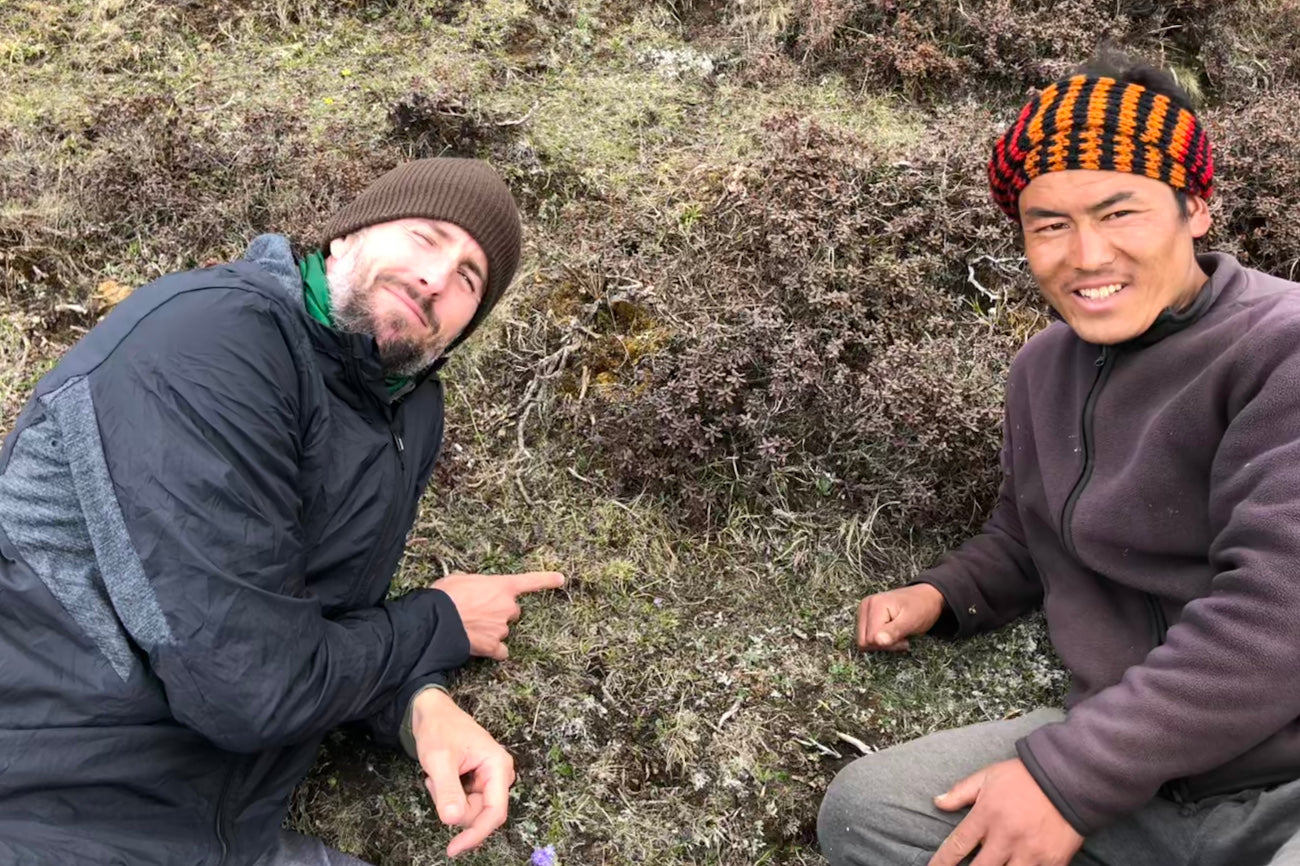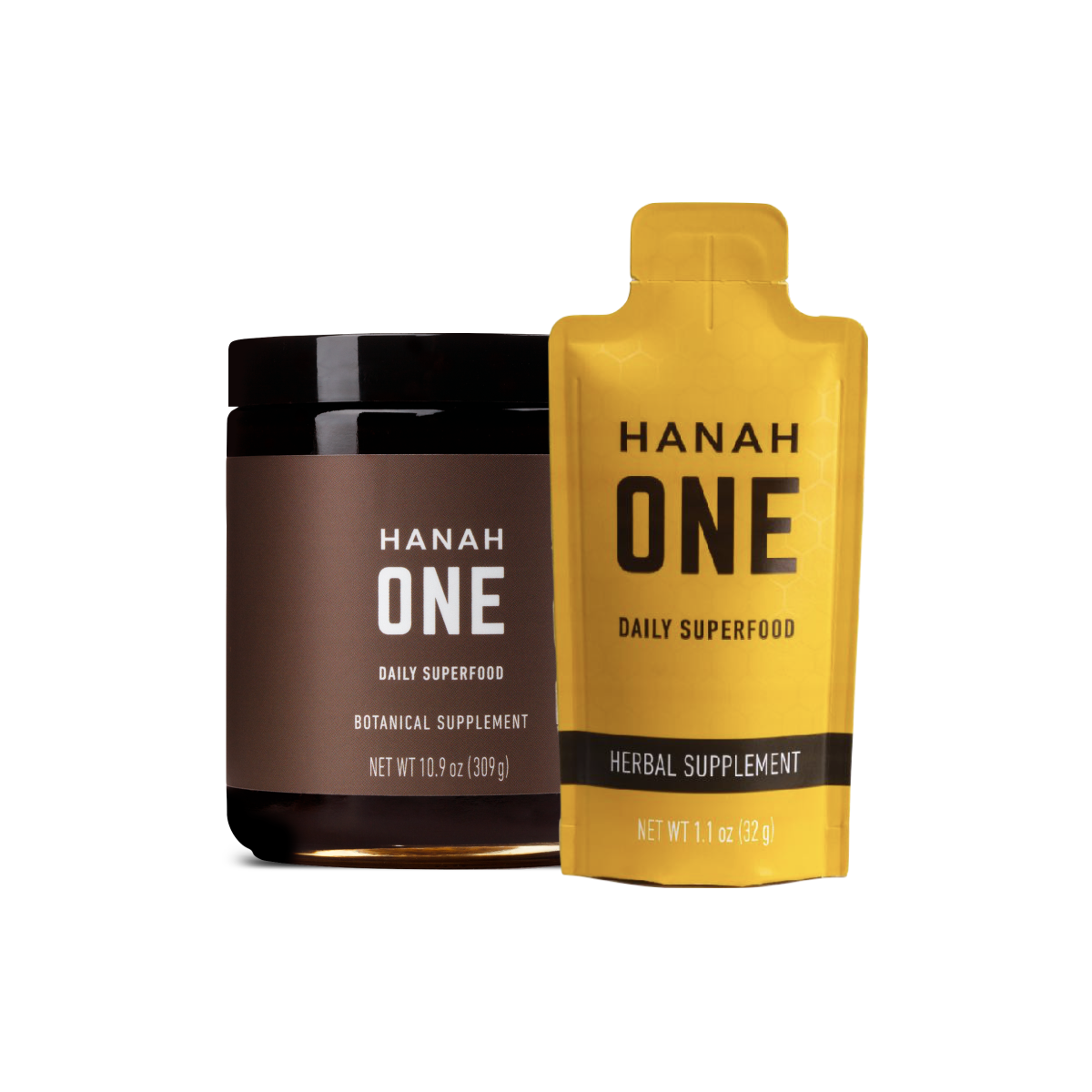Supporting Bhutanese communities and sustainable Cordyceps sinensis harvesting

Not all ingredients are created equal
Part 2 in our series on Cordyceps and the HANAH difference
In the previous post in this series, we examined the profound differences between wild-harvested Cordyceps and lab-grown mycelium that is created either in liquid tanks or grown on grains, wood chips, or sawdust. The former, which is the core of HANAH’s unique Cordyceps+ formula that revives an ancient recipe found in the Sowa-Rigpa, is a highly potent, premium extract that’s handmade from Cordyceps gathered by highlanders on the fertile slopes of the Himalayan Plateau in Bhutan. The latter are low quality, cheap imitations that contain only a small percentage of this prized mushroom’s natural medicinal properties, are often mostly grain, and can be contaminated by pesticides and harsh solvents used in the extraction process.
Another reason for choosing wild-grown cordyceps over lab-cultured alternatives is an ethical one. Finding the fruiting body of a caterpillar fungus (“yartsa gunbu” in Tibetan, meaning “summer grass, winter worm”) involves a long, difficult, and painstaking search by highly trained eyes for something that might only protrude from the soil of the eastern Himalayan slopes by a centimeter or less. Extracting the fungus from the ghost moth caterpillar that gestates it, gently cleaning it without damaging the structure, and distinguishing between prime samples and those that should be discarded or placed in a different, lower-quality batch during grading are just three steps in a lengthy, specialized process. And clambering around a rocky hillside at an elevation of between 14,000 and 17,000 feet requires a combination of agility and hardiness that few possess.

That’s why Cordyceps harvesting permits are only given to experienced locals who understand and respect the delicate mountain ecosystem, are attuned to its fickle weather, and know the best areas to find the fungus. Many of them supplement their variable income from yak herding with harvesting this most potent of fungi, the sale of which can comprise up to 90% of family income according to an Economic Botany article by Cordyceps expert Daniel Winkler.
Climate change is already putting the Bhutanese’s Cordyceps-based earnings at risk. Rising temperatures are reducing the quantity of the mushroom that’s being harvested by the country’s highlanders. In the past couple of years, this has somewhat benefited them, as increased scarcity and rising demand have intersected to drive the per-kilo price as high as $42,000. But in the long term, the entire trade is at risk if yields continue to decline and consumers start favoring inferior products made from lab-grown mycelium.
This is why the King of Bhutan and his officials are determined to protect Cordyceps, the villagers who harvest it, and the pristine environment it grows in. They were initially reluctant to allow collection of the fungus at all, until relenting and issuing the first permits in 2006. To ensure that the fertile mountain slopes are managed sustainably, the Bhutanese government has instituted several policies since then that ensure it’s only being worked by local people who are approved to collect Cordyceps using old-world techniques that protect the soil and that fungus harvesting is only conducted during a certain point in the growing cycle – typically May or June. This ensures that the Cordyceps is extracted at just the right time to deliver the best product and also that spores are deposited to begin the new cycle.
Harvesting is overseen by local officials and forestry service staff, who also keep an eye out for poachers and outsiders who’d like nothing more than to get their hands on some of Bhutan’s most treasured crop. It’s not just collectors that benefit from the Cordyceps harvest, but also the exporters who auction it to buyers from around the world. Cordyceps has elevated the standard of living for many Bhutanese and opened up new opportunities in business and education that previously would have been unimaginable. Without their lucrative trade, many highlanders would have to return to full time yak farming, which is extremely labor-intensive and yields a comparatively paltry sum of around $155 per year for meat, butter, and cheese.
At HANAH, we believe that all our local partners in Bhutan deserve to be compensated fairly for their efforts and expertise far beyond the country’s average wage of NU40 (the equivalent of less than a dollar a day). This way, they can provide a living for their families and pass on their eco-friendly and sustainable practices to their children. Such a commitment increases our costs, but we believe this is justifiable because it’s the right thing to do for people we’ve come to know and appreciate during our many visits to their villages. It’s something small we can do for them.
In stark contrast, creating Cordyceps in a lab undermines the business and very livelihood of Bhutanese harvesters and those across the Himalayan Plateau, favoring lower unit costs and greater profit over quality control and support of a precarious micro-economy. We’re determined to not only benefit our customers by offering the highest quality Cordyceps available, but also to support its continued collection by our friends in Bhutan. With opportunity comes responsibility, and that’s why we’ll never switch out precious wild Cordyceps for lab-grown alternatives, or sell out the people who harvest them.
Learn more about our series on Bhutan and Cordyceps
- Part 1: HANAH's hunt for Cordyceps sinensis in Bhutan
- Part 3: The great Cordyceps swindle: the hidden truth lurking in your “mushroom” tea, powder and capsules
- Part 4: The mushroom gold rush – how to avoid a supplement swindle
- Part 5: The Athlete’s Ally: Adding Cordyceps to Your Performance + Recovery Toolkit
- Part 6: Need an athletic edge? Get a natural endurance and power boost with HANAH Cordyceps+
Check out our HANAH ONE & Cordyceps+ bundle
Subscribe and save up to 20% off these two powerful products. Learn more here.








Leave a comment
This site is protected by hCaptcha and the hCaptcha Privacy Policy and Terms of Service apply.